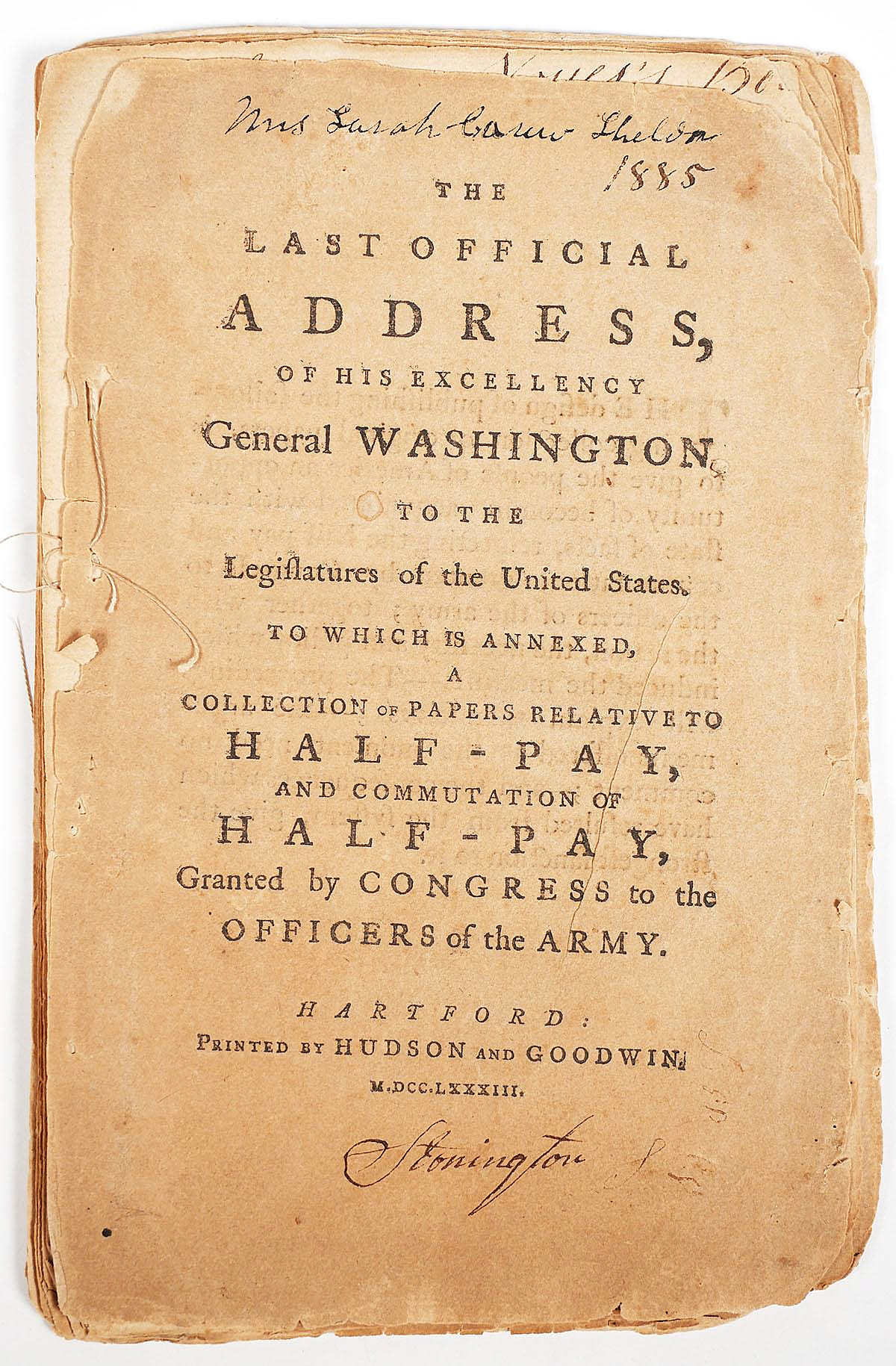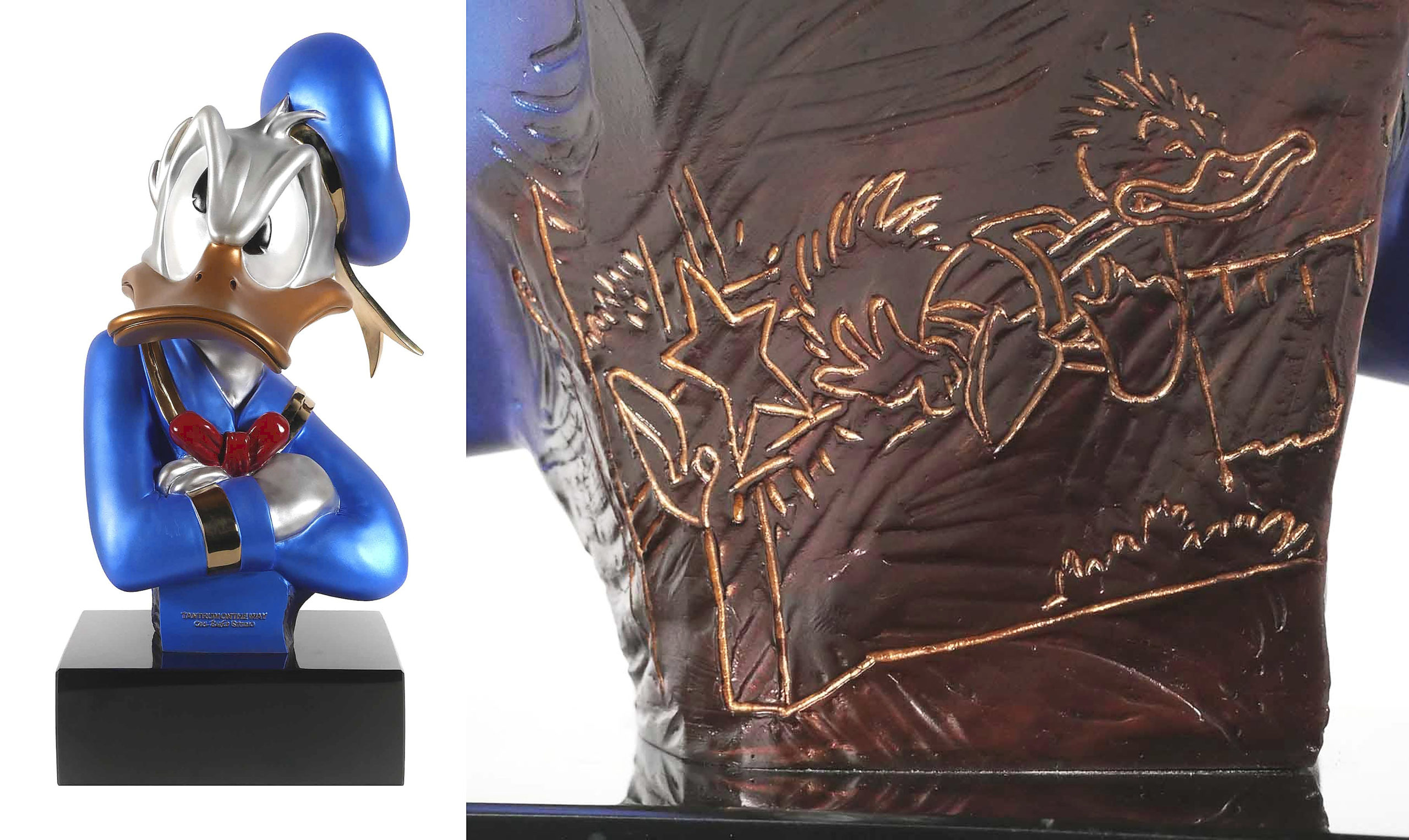
Formerly presumed lost, this portrait of Sitting Bull was one of four painted by Caroline Weldon in Standing Rock Reservation circa 1889 and triumphed at $67,100.
Review by Z.G. Burnett, Photos Courtesy Blackwell Auctions
CLEARWATER, FLA. — The American Sale at Blackwell Auctions occurred on March 18, showcasing lots from all categories and periods of American history. Fine art, works on paper, letters, ephemera and collectibles reached the upper lots, the common denominator of each being that they were pieces of American material culture. The accumulated 395 lots brought a $387,767 total with a 92 percent sell-through rate, and each of the top lots were purchased by domestic bidders.
At the top of the sale was an oil on canvas portrait of the Sioux leader Thathánka Íyotake, better known as Sitting Bull (1831-1890). Following the invasion of Sioux lands in the Black Hills of South Dakota by the United States government, when the 1868 Fort Laramie Treaty was ignored and tribes were removed from their territories by force, Sitting Bull became a key leader in the ensuing Great Sioux Wars. This culminated in the 1876 Battle of Little Bighorn, when he and Crazy Horse led united tribes to defeat General George Armstrong Custer. Sitting Bull was later forced to surrender in 1881, and was a prisoner in Fort Randall for two years before being moved to Standing Rock Reservation. It was here that the Swiss American artist Caroline Weldon (née Susanna Karolina Faesch, 1844-1921) met Sitting Bull after she joined the National Indian Defense Association, later becoming his interpreter and secretary. During this time, Weldon painted four portraits of him, two of which were believed to be lost until this example was brought to auction. It belonged to William Lafayette Darling (1856-1938), a railroad construction engineer, and descended through his family. The painting was bought by an American bidder for $67,100 within its $40/80,000 estimate.
A lithograph signed by Thomas Hart Benton (1889-1975) followed the portrait in price and told a different genre of American history, amalgamating the crimes of Missouri-born bandit and folk hero Jesse James (1847-1882). This was taken after a series of murals in the Missouri State Capitol building, painted by Benton in 1936, and returned to the Midwest. The lithograph tied with a near mint 1952 Bowman Mickey Mantle baseball card at second place in the auction for $12,870 ($10/20,000).

This edition of The Last Official Address of his Excellency General George Washington to the Legislature of the United States was printed in 1783 and closed at $7,320.
Another work on paper in the top lots was far more placid in tone, an original sketch of “Madeline” from the children’s book series by Ludwig Bemelmans (Austrian American, 1898-1962). The first Madeline picture book received a Caldecott Honor in 1940, and later Madeline’s Rescue won the Caldecott Medal in 1954. Bemelmans also wrote a series of memoirs for adult readers, all of which contained his uniquely stylistic illustrations. The ink and gouache painting included Bemelmans’ recognizable signature and was bid to $4,270 ($2/4,000) by an online bidder in the West.
Other top lots in the sale were definitively bellicose, led by a World War II battle-worn M-1 helmet and liner from the 69th Infantry that multiplied its $200/400 estimate to $7,930. This regiment is known for liberating Buchenwald’s subcamp Leipzig-Thekla in 1945. Slightly earlier and selling at $3,510 ($2/4,000) was an “exceedingly rare” 1780 Revolutionary War bond signed by Francis Hopkinson (1737-1791), a signer of the Declaration of Independence for New Jersey who also designed paper currency issued by the Continental Congress and two early flags for the United States. Another surprising result was $7,320 ($400/800) for a 1783 Hudson & Goodwin, Hartford, Conn., publication of The Last Official Address of his Excellency General George Washington to the Legislature of the United States, including papers related to payment by congress to army officers. From the War of 1812 was a letter written by Captain John Sharp, accusing his commander Brigadier General William Hull of treason for surrendering Fort Detroit to the British General Isaac Brock and Shawnee warrior chief Tecumseh. Hull was court-martialed for cowardice and neglect of duty and sentenced to execution, but his sentence was ultimately commuted by President James Madison. The letter was bid to $4,095 ($600-$1,200).
Civil War documents were also popular with bidders. First was an 1863 officer’s appointment signed by President Abraham Lincoln and secretary of war Edwin Stanton, granting a captaincy to Eleazer H. Ripley of Connecticut in the 85th Reserve Corps. The reserve was for soldiers who had been wounded in battle and no longer able to fight, but were still able to perform non-combat duties. Ripley’s left arm was amputated following action during the Battle of Antietam, and his appointment earned $6,710 ($5/10,000) from an online bidder in the West. Next in this category was a group lot of more than 80 wartime and postwar letters and documents from Edson Haskell, 1st Regiment, New York Engineers. Haskell’s letters begin in basic training and continue throughout many detailed battle accounts, including the Battle of Fort Pulaski, assaults on Fort Wagner (Morris Island) and serving with the 54th Colored Regiment. It was a lucky day for the New England bidder that was able to buy this collection at $4,680 ($6/12,000).

This World War II “Fighting 69th” M-1 helmet and liner was painted with a major’s insignia and won a surprising $7,930.
Two bronze statues did well, even though their medium was the only similarity between them. A limited edition signed and numbered bust of “no one but” Donald Duck titled “Tantrum on the Way” by Carl Banks pouted its way to $6,710 ($3/6,000) from a New England buyer. The bust was made in 1997 by Carl Banks (1901-1999) exclusively for Disney World’s annual Disneyana Convention, and showed an etched reproduction of a 1946 comic scene on the reverse surface.
Catching up from behind was a 13½-inch bronze of Daniel Chester French’s (American, 1850-1931) “The Concord Minute Man of 1775,” circa 1875. The sculpture was cast by Gorham Company Founders, Providence, R.I., and bought by a Southern buyer online for $4,575 ($1/2,000).
Two more lots provided another glimpse into the history of the American West. A second model Winchester 1873 lever action .44-.40 caliber repeating rifle, circa 1881, more than doubled its $200-$1,000 estimate to $3,050 and sold to an online bidder in the Midwest. Next in price was a half plate tintype of an unidentified Western frontiersman dressed in a coonskin cap and fur trousers, wearing what appears to be a Civil War-era knife on his belt and a powder horn possibly decorated with Grand Army of the Republic insignia and emblems. The subject also held a Sharps carbine rifle, and his entire presence was a delightful contrast to the idyllic studio background. Housed in what seemed to be half of the original case, the crisp image realized $2,925 ($500-$1,000) and went to a Southern buyer online.
Prices quoted with buyer’s premium as reported by the auction house. For information, www.blackwellauctions.com or 727-546-0200.



















